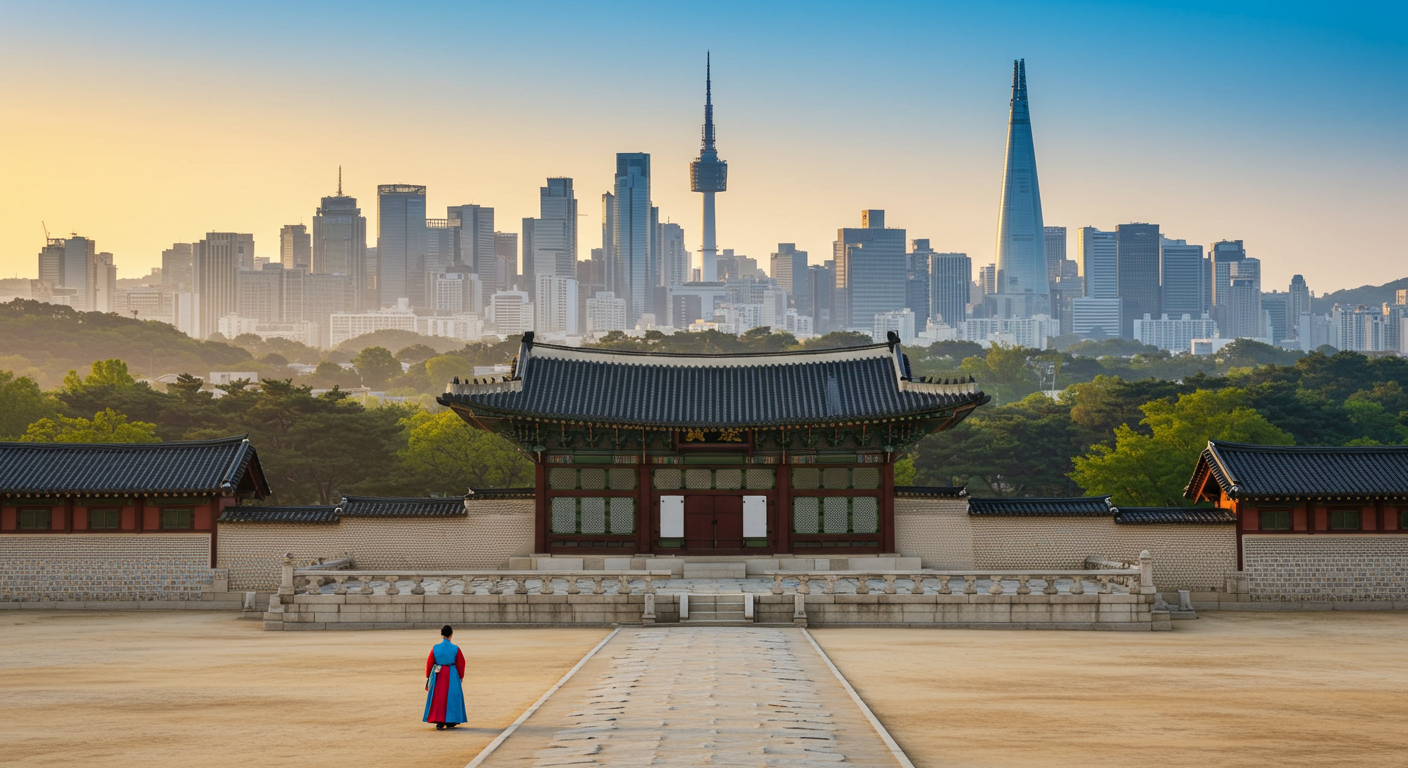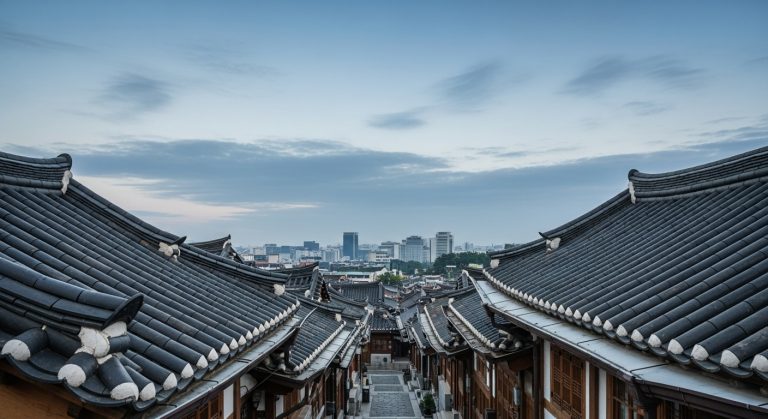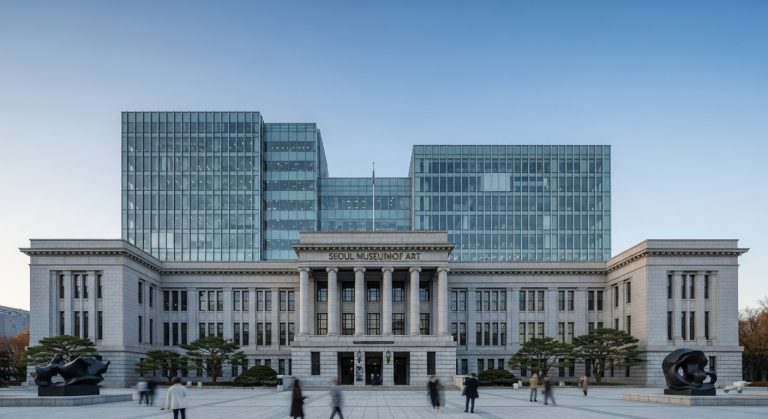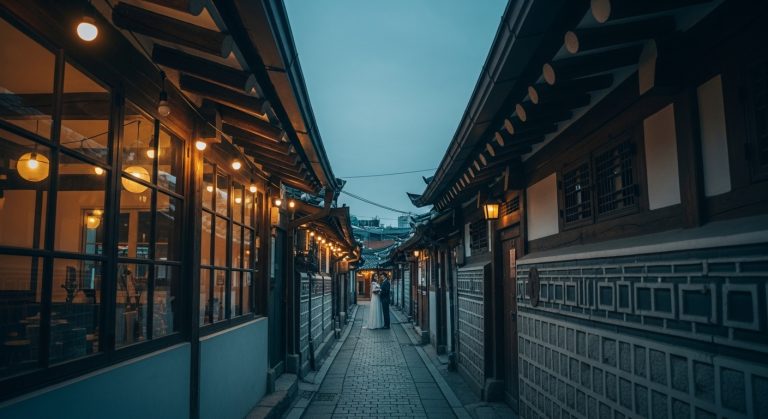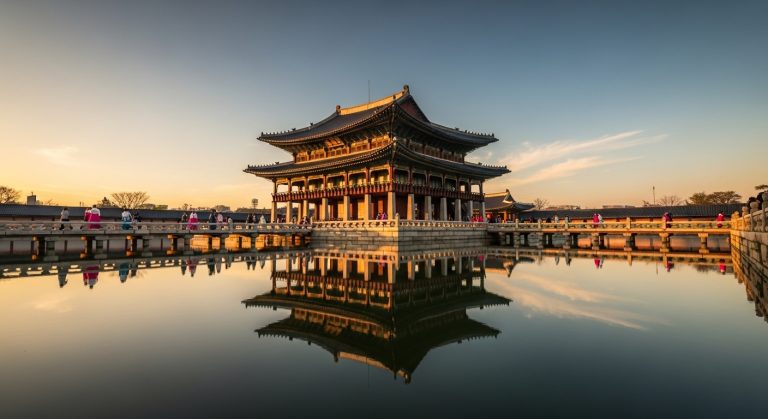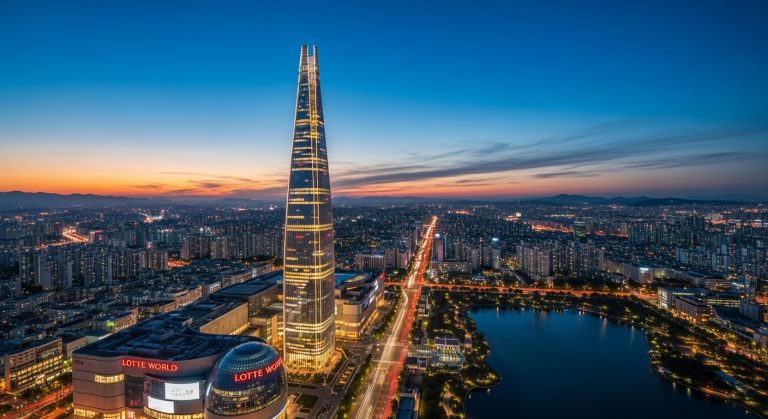Hanyangdoseong: Unlocking the History and Beauty of the Seoul City Wall Gates

Unlocking Seoul’s 600-Year History: The Ultimate Guide to the Hanyangdoseong City Wall Trail
Planning to walk a piece of history? The Seoul City Wall, or Hanyangdoseong, is an incredible 18.6-kilometer fortress that has guarded the city for over six centuries, offering a profound journey through Korea’s past and spectacular panoramic views of modern Seoul.
This comprehensive guide breaks down the history, the four major trail courses, the magnificent gates, and all the essential tips you need to successfully hike this UNESCO World Heritage candidate!
Have you ever felt completely disconnected from the hustle and bustle of a major metropolis?
Sometimes, I find myself craving an escape from the endless concrete jungle, even when I’m right in the middle of a vibrant city like Seoul.
It might sound strange, but I believe the greatest urban adventures often involve stepping back in time to appreciate the foundations upon which the modern city was built, and that is precisely what the Hanyangdoseong (서울 한양도성) offers us.
This incredible wall, built in 1396 during the early years of the Joseon Dynasty, isn’t just a historical relic; it’s a living, breathing piece of Seoul’s identity that wraps right around the capital.
I remember the first time I stood on the ramparts and looked out—it was truly breathtaking, a feeling of seeing six centuries simultaneously! 😊
If you’ve been looking for an engaging mix of challenging hiking, deep history, and unforgettable cityscapes, then this ultimate guide is your blueprint for conquering the ancient Seoul City Wall.
The 600-Year Legacy: A History of the Seoul City Wall 📜
To truly appreciate the Hanyangdoseong, you have to understand the context of its creation.
When King Taejo established the Joseon Dynasty in 1392, one of his first and most critical tasks was selecting a new capital city that adhered to the principles of pungsu-jiri (geomancy), which led him to Hanyang (modern-day Seoul).
The construction of the Wall began in 1396, a monumental undertaking that was completed incredibly quickly, in just 98 days, during two phases of mobilization.
It was built to protect the new capital and to mark the definite boundary of the city, encompassing the Inner Four Mountains (Naesasan): Baegaksan (main peak), Naksan, Namsan, and Inwangsan.
Did you know the wall has a brilliant early form of project management?
To track the quality and accountability of the massive construction project, stone cutters were mandated to engrave the names of the district, the supervisor, and the construction period onto the wall stones, a system known as Gaeum.
The Wall is a historical textbook in stone, beautifully illustrating changes in Korean architectural style across different periods.
The wall you see today isn’t a single construction; it’s a patchwork reflecting three major construction periods, each distinguished by the size and cut of the stone.
The early Taejo period stones were large and naturally rough-hewn, almost like simple boulders.
The Sejong period (mid-15th century) saw an improvement to more uniform, rectangular stones that were slightly smaller.
However, it was the large-scale restoration under King Sukjong in 1704 that introduced the precise, cubic, and well-fitted stones that characterize the majority of the wall today.
If you look closely, you can clearly see these distinct architectural styles side-by-side on the trail!
The Eight Majestic Gates: Seoul’s Guardians (Sahimun) 🚪
The Hanyangdoseong has four main gates—the Four Great Gates (사대문, Sadeamun)—and four minor gates—the Four Small Gates (사소문, Sasomun).
These gates were not just entry points; they were symbolic landmarks, each aligned with a directional element and corresponding virtue from Confucian philosophy.
The Great Gates, in particular, were monumental structures that controlled access to the capital and represented the city’s power and sanctity.
Understanding their names is a quick lesson in Joseon philosophy, as they embody the principles of benevolence, righteousness, propriety, and wisdom.
A Closer Look at the Four Great Gates
| Gate Name | Direction / Virtue | Status Today | Key Detail |
|---|---|---|---|
| Sungnyemun (숭례문) | South / Propriety (禮) | Restored (National Treasure No. 1) | Historically the most important gate, still stands today. |
| Heunginjimun (흥인지문) | East / Benevolence (仁) | Existing (Treasure) | Features a curved wall (Ongseong) for defense. |
| Sukjeongmun (숙정문) | North / Wisdom (智) | Restored (Used primarily for ceremonial purposes). | Located deep in the mountains, it was usually kept closed. |
| Donuimun (돈의문) | West / Righteousness (義) | Destroyed (Only site remains) | Sadly demolished in 1915; efforts to digitally restore it are ongoing. |
The Minor Gates and Their Cultural Roles
The Four Small Gates were equally vital, serving as points of daily traffic, emergency access, and specific ceremonial functions.
For instance, Gwanghuimun (광희문) in the Southeast was traditionally used for funeral processions, giving it a somewhat somber, yet essential, role.
Hyehwamun (혜화문) in the Northeast, the only existing gate that is actually a smaller gate, played a crucial role in regulating traffic from the northern provinces.
Then there is Chang-uimun (창의문), also known as Jahamun, which is located in the Northwest and is famous for being the gate that King Injo used to escape during the Second Manchu invasion in 1636.
While Sungnyemun (South Gate) is fully restored after the 2008 fire, it remains an active National Treasure site.
Always check the official management schedule before visiting, as access to the upper wooden pavilion (nu above the stone arch) can be restricted due to ongoing preservation work and safety inspections.
Conquering the Hanyangdoseong: A Detailed 18.6km Trail Guide 🏞️
The entire 18.6-kilometer perimeter of the Wall has been divided into four distinct courses for hikers, each presenting a unique challenge, terrain, and view of Seoul.
It is extremely rare for a capital city to offer such an extensive, accessible, and historically significant urban hiking experience, which is why it’s a must-do for any visitor or resident.
I’ve personally walked every single section, and trust me, the difficulty ratings are legitimate, so make sure you plan your day according to your fitness level and available time.
Let’s dive deep into what you can expect from each of the four main Hanyangdoseong sections!
1. Baegak (Bugaksan) Mountain Course (The Pinnacle of Challenge)
Distance: Approximately 4.7 kilometers
Time: Approximately 3 hours (non-stop walking)
Difficulty: Hardest (Steep Ascents/Security Restrictions)
This is arguably the most essential part of the wall, as Baegaksan (Bugaksan) is the main mountain that forms the geomantic heart of Seoul.
It is a challenging hike, featuring steep, sometimes treacherous, staircases, and it requires a significant amount of stamina to complete, but the views are absolutely unmatched.
Historically, this section was closed to the public for nearly four decades due to its proximity to the Presidential Blue House, so its recent opening has been a massive event for the city.
You’ll feel a palpable sense of history here, not just from the ancient stones, but also from the security presence and the incredibly preserved, untouched natural environment.
Essential Information for the Baegak Trail:
- ID Requirement: You MUST carry a valid photo ID (passport, alien registration card, driver’s license) to pass through the security checkpoints at the start/end points.
- Photography Restrictions: Certain security-sensitive areas still have strict “No Photography” rules, so please respect the signage at all times.
- Key Spot: Make sure to find the ancient pine tree near Chang-uimun, which is famous for its historical significance and incredible age.
2. Inwangsan Mountain Course (The Artistic & Spiritual Path)
Distance: Approximately 4.0 kilometers
Time: Approximately 2.5 hours
Difficulty: Moderate (Some Steep Sections, Rocky Terrain)
The Inwangsan trail is renowned for its strikingly unique granite rock formations, which are often the subjects of traditional Korean ink paintings.
This course is a favorite among photographers because of the dramatic, sculptural landscape and the stunning views it provides of the city’s west side, including Jongno.
While it features some steep stone staircases, particularly near the summit, it is generally considered less strenuous than the Baegak section, offering a rewarding blend of challenge and scenery.
I love the feeling of being surrounded by the massive, weathered rocks that seem to tell their own ancient stories—it truly is a spiritual experience.
Inwangsan’s Must-See Architectural Elements:
- Seonsa-bawi (선사바위): A massive rock formation near the summit that resembles a meditative monk, considered sacred by many.
- Banya-am (반야암): A small, tucked-away temple offering a moment of quiet reflection amidst the rocky terrain.
- The Wall’s Curves: This section features some of the most dramatic, winding curves of the Wall, clinging tightly to the mountain ridge.
- Jongno View: The panoramic view over the Gyeongbokgung Palace area and the heart of Jongno is arguably the best on the entire Hanyangdoseong trail.
3. Naksan Mountain Course (The Easiest & Most Urban)
Distance: Approximately 2.1 kilometers
Time: Approximately 1 hour (leisurely pace)
Difficulty: Easy (Gentle Slope, Family-Friendly)
If you’re looking for history without the intense physical demands of a mountain hike, the Naksan course is perfect for you.
This short section, stretching from Hyehwamun (Northeast Gate) to Heunginjimun (East Gate), is characterized by its gentle slopes and its integration with a charming, colorful residential area.
Naksan is often called a “hill,” not a “mountain,” which means it offers some of the most accessible and leisurely walks along the wall, making it ideal for families and casual tourists.
This course provides unique photo opportunities, showcasing the contrast between the ancient stone wall and the brightly painted, artistic neighborhoods that have sprung up around it.
Naksan’s Best Features:
- Mural Village: The trail is right next to the famous Ihwa Mural Village, adding a vibrant, artistic dimension to your walk.
- Sunset Views: Naksan is arguably the best spot on the entire Wall to watch the sunset over Seoul, casting a beautiful, warm glow on the city skyline.
- Hyehwamun: The start/end point is the beautifully restored Hyehwamun, a crucial Small Gate.
4. Namsan (Mongmyeoksan) Mountain Course (The Classic Icon)
Distance: Approximately 4.2 kilometers
Time: Approximately 3 hours
Difficulty: Moderate (Longer Distance, Hill Ascents)
This is the most popular and centrally located section of the Hanyangdoseong, wrapping around the iconic Namsan, the Mongmyeoksan of old.
It stretches between Sungnyemun (South Gate) and Gwanghuimun (Southeast Gate), offering incredible views that include the N Seoul Tower, one of Seoul’s most recognizable landmarks.
The Namsan course is a beautiful mix of history and modern tourism, being completely integrated into the well-maintained Namsan Park.
The difficulty is moderate, as it involves a steady climb up Namsan, but the paths are paved and well-managed, making it highly accessible to most hikers.
Highlights of the Namsan Course:
- N Seoul Tower: The summit provides a 360-degree view of the entire city, a truly unforgettable panorama.
- Namsan Beacon Fire Station: This historical site was part of the ancient communication network, using fire and smoke signals to transmit news.
- Sungnyemun & Gwanghuimun: You get to start and finish at two of the most historically significant gates of Joseon.
Trail Difficulty Planner: Which Hanyangdoseong Section is for Me? 🔢
Choosing the right course for your day trip is the most critical decision for a pleasant experience!
Use this simple, interactive tool I put together to help you match your personal fitness level and time constraints with the best Hanyangdoseong trail for your needs.
Hanyangdoseong Course Matcher
Preservation, Restoration, and the Future of Hanyangdoseong 🏛️
Despite its incredible age, the Wall faced its greatest threats not from ancient siege weapons, but from modern urbanization and colonialism.
During the Japanese colonial period, several key structures, including the West Great Gate (Donuimun), were tragically demolished to make way for modern roads and infrastructure.
The post-war era and rapid industrialization also took their toll, with sections being damaged or lost due to new housing and commercial development.
Fortunately, since the 1960s, a robust and long-term restoration effort has been underway, aiming to restore the wall to its original 18.6km glory, piece by historical piece.
The Seoul City Wall is currently on the UNESCO World Heritage Tentative List.
Its outstanding universal value is recognized for its longevity, its nearly complete circuit around a major capital city, and the clear historical record embedded in its construction techniques.
Detailed Look at Wall Construction Periods
As I mentioned earlier, the distinct stone styles are a visible timeline, and being able to identify them makes the hike feel like a scavenger hunt!
This unique feature is one of the key reasons why the Wall is such a valuable historical artifact and cultural asset for South Korea.
| Period (King) | Approximate Date | Stone Type / Appearance | Labor System |
|---|---|---|---|
| Taejo (태조) | 1396 AD | Rough-hewn, natural stones; irregular shapes and sizes, fitted like a jigsaw puzzle. | Draft labor organized by provinces. |
| Sejong (세종) | Mid-15th Century | Rectangular, slightly more uniform stones; an improvement over Taejo’s era. | More systematic, improved organization. |
| Sukjong (숙종) | 1704 AD | Perfectly cut, cubic, large, and highly uniform stones; the most advanced technique. | Highly centralized, highly organized labor system. |
Walking along, you’ll see the transition points where one construction era meets the next, creating a tangible sense of the passage of time, which is truly phenomenal.
This continuity of a single structure built and rebuilt over such a long period is what gives the Hanyangdoseong its incredible historical and cultural depth.
Visual Summary: The Four Courses at a Glance 🗺️
Here is a quick visual summary of the key features of the four main Hanyangdoseong trail sections, which should help you decide where to lace up your hiking boots first!
Baegak (Bugaksan) Course
Naksan Course
Namsan Course
Ready to Walk the Wall? A Final Encouragement 🚶♀️
There’s a saying that you haven’t truly seen Seoul until you’ve viewed it from the Hanyangdoseong, and I couldn’t agree more.
Each step you take along the 18.6km path is a direct connection to the city’s 600-year soul, a profound walk that bridges the past and the present in the most physical way possible.
Whether you choose the intense challenge of Baegak or the leisurely stroll of Naksan, you’re guaranteed an experience that is far richer than just sightseeing.
So grab your best hiking shoes, pack plenty of water, and get ready to create your own chapter in the long, storied history of the Seoul City Wall!
Do you have a favorite section of the Wall? Did you complete the entire circuit?
I’d love to hear your personal anecdotes and tips in the comments below—let’s share the joy of this incredible piece of Korean heritage! 😊
